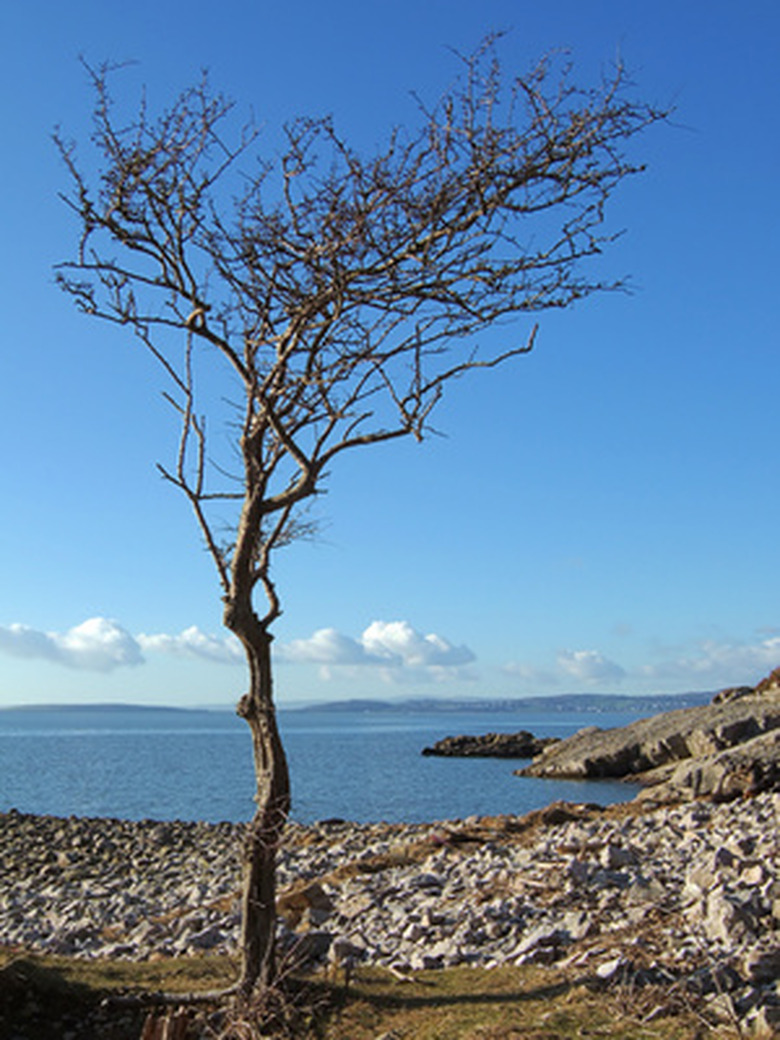How To Grow Fruit Trees In Coastal Areas
Things Needed
- Fruit tree
- Shovel
- Compost
- Peat moss
- Soil testing kit
- Lime, nitrogen, etc.
- Tree blanket
- Insulation wrap
Fruit trees can easily flourish in coastal areas, as long as they are protected from cool temperatures and are hardy. Pick dwarf or semi-dwarf varieties (the smaller size make them easier to maintain and harvest fruit), as well as fruit that can survive in salty air and sandy soil. As long as you pick your planting site carefully and provide regular maintenance, your fruit tree will thrive in coastal areas.
Step 1
Choose fruit tree varieties that are specifically cultivated for your region and climate. Some coastal fruit trees will only encounter warm weather, as in Florida. Others will need to be cold tolerant, for areas such as the Northeast.
Step 2
Select a planting site that has full sun for most of the day. Ideally, the site will be on a hillside so that damp fog won't settle over it in a lower plateau.
- Fruit trees can easily flourish in coastal areas, as long as they are protected from cool temperatures and are hardy.
Step 3
Anticipate the need to protect the fruit trees from the coastal winds by choosing a site behind taller trees or behind an additional hill that will block the wind. You can also install tall garden walls to break up the wind.
Step 4
Prepare the soil in the fall season. Dig a hole that is at least 2 feet deep and 4 feet in diameter. Add a 1-inch layer of compost, then an additional layer of peat moss and dirt. Repeat this layering until half full. In early spring, shift the dirt layers deep. Test your soil with a pH testing kit. Add what is necessary to achieve a 5.5 to 7.0 pH balance, using lime or nitrogen, to ensure the optimum growth of the fruit tree. Plant the tree in this prepared soil in late spring.
- Anticipate the need to protect the fruit trees from the coastal winds by choosing a site behind taller trees or behind an additional hill that will block the wind.
- Test your soil with a pH testing kit.
Step 5
Water the newly planted fruit trees immediately. You want this first watering to soak all the way through the roots, so make sure it is a deep watering for about five to 10 minutes. During the growing season, you will need to water the fruit tree consistently, as the coastal breezes will dry it out more easily.
Step 6
Protect the fruit tree from cold to freezing temperatures, if necessary, with a tree blanket and insulation wrap. If exposed to very cold temperatures for too long, your fruit tree will suffer.
